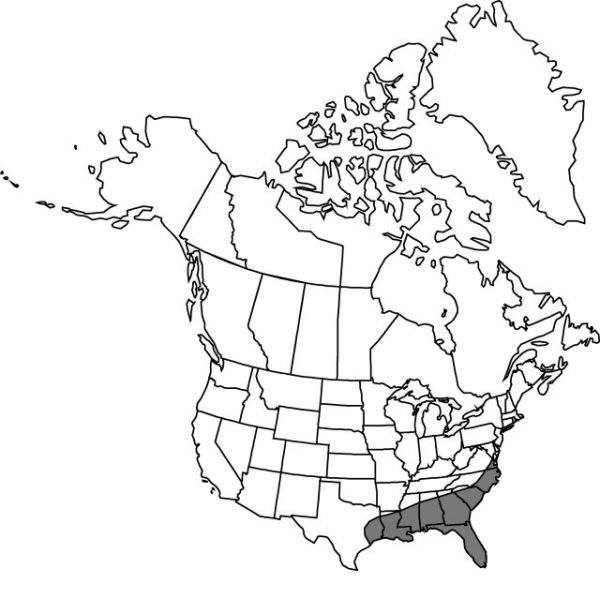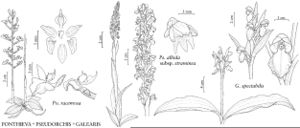Ponthieva racemosa
Contr. U.S. Natl. Herb. 6: 460. 1901.
Plants 30–60 cm. Roots 2–3 mm diam. Stems subterranean, short. Leaves green at anthesis, 2–6, subpetiolate; blade elliptic to oblanceolate, 5–17 × 2–5 cm, apex rounded to acute. Inflorescences: peduncle to 25 cm, partially enclosed by tubular sheaths, proximalmost sometimes leafy; rachis laxly 20–35-flowered, 5–25 cm; floral bracts narrowly lanceolate, clasping base of ovary, to 10 mm, apex acuminate, pubescent. Flowers: sepals greenish white, adaxially pubescent; dorsal sepal distinct, ovate-elliptic to elliptic-lanceolate, 4–7 × 2–3 mm, apex obtuse; lateral sepals broadly, obliquely ovate, 4.3–6.5 × 2.5–3.5 mm, apex acute to obtuse; petals white, green-veined, obliquely triangular, 4–6 × 3.5–5 mm, margins minutely ciliate or entire, glabrous; lip white with green, deeply concave center, distinctly clawed, suborbiculate, 5–7 × 5–7 mm, apex short-caudate; column white, 4–5 mm; pedicellate ovary 10–20 mm. Capsules 8–13 mm.
Phenology: Flowering fall–winter (Sep–Feb).
Habitat: Moist, shady hammocks, swamps, ravines, wet savannas, pine forests
Elevation: 0–50 m
Distribution

Ala., Fla., Ga., La., Miss., N.C., S.C., Tex., Va., Mexico, West Indies, Central America, South America.
Discussion
In Florida, Ponthieva racemosa is self-compatible but not autogamous. Natural fruit-set in one population in northern Florida was 35% (J. D. Ackerman 1995). In Florida, small halictid bees were observed visiting the flowers (C. A. Luer 1972).
Selected References
None.
